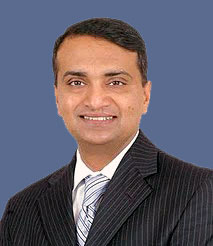|
 The
airline currently has 19 Boeing 737-800 and 737-900ER
aircraft and operates 129 flights daily to 18
cities in India. The airline plans to break even
by March-end this year. The airline currently
has a market share of 13 percent in India’s aviation
market. The carrier is also awaiting approval
to expand internationally, with the carrier stating
it expects approvals in April 2010 and the introduction
of service in late May 2010. The
airline currently has 19 Boeing 737-800 and 737-900ER
aircraft and operates 129 flights daily to 18
cities in India. The airline plans to break even
by March-end this year. The airline currently
has a market share of 13 percent in India’s aviation
market. The carrier is also awaiting approval
to expand internationally, with the carrier stating
it expects approvals in April 2010 and the introduction
of service in late May 2010.
"We plan to raise USD 50 million to USD
75 million in next six months," Mr. Aggarwal
said disclosing the company's plan to raise the
stake in market. SpiceJet has reported a profit
of 1.08 billion in Oct-Dec against a loss a year
ago. Thanks to the economic revival, the Indian
aviation industry has taken off again, overcoming
fears of being grounded for long by the threat
posed by last year’s slowdown.
“We have appointed Edelweiss and IDFC to co-manage
the process and they are working on it right now.
We did investors meeting a couples of week ago
and now the process is ongoing. They will review
and ask questions. They are trying to understand
the business model and the industry and in due
course. The investors will make a decision,” explained
Mr Aggarwal.
SpiceJet had received $100 million of foreign
investment when US billionaire Wilbur Ross, who
along with investment bank Goldman Sachs, invested
in the airline in August 2008. Mr Ross’s money
came in by way of foreign currency convertible
bonds or FCCBs, while Goldmans Sachs has a 2.3%
holding. The largest shareholder in SpiceJet is
Kenya-based Kansagra family, which owns 13 per
cent.
India’s domestic air passenger demand went up
35 per cent but capacity increased only 10 per
cent in December, as per data from industry regulator
Directorate General of Civil Aviation.
Mr Aggarwal says that continued improvement in
demand will boost yields, or average fare per
customer, to "mid-Rs-3,000" level from
the current "low-Rs-3,000" level for
low-cost carriers in second half of next fiscal
year.
|